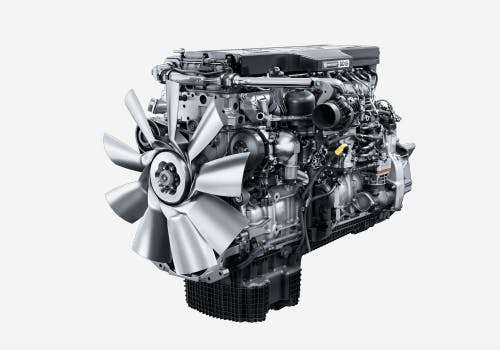A Total Overview to Selecting the Right Engine for Your Job
Choosing the suitable engine for your project is a vital choice that can substantially impact its general success. Each of these aspects plays a pivotal role in guaranteeing that your chosen engine not only satisfies immediate goals yet also lines up with long-lasting ambitions.
Define Your Project Requirements
Defining your project requires is a vital action in picking the suitable engine for effective implementation. An extensive understanding of your project's goals will certainly assist you in determining the functions and abilities called for from an engine. Begin by describing the range of your job, consisting of the wanted performance, target audience, and the specific results you aim to accomplish.
Next, consider the technical needs that straighten with your task objectives. This includes assessing the compatibility of the engine with existing systems, along with the shows languages and structures that will certainly be utilized. Furthermore, analyze the level of scalability called for to fit future growth or changes in need.
Budget constraints also play an essential function in specifying your project requires. Develop a clear financial structure to guide your decision-making process, making sure that the engine chosen fits within your budget while giving the needed functionality.
Evaluate Performance Needs

Engines that sustain straight scaling are frequently preferable for larger applications. In addition, assess the engine's efficiency under various conditions, such as peak use situations, to ensure it satisfies your reliability standards.
Take Into Consideration Convenience of Use
While technical requirements are important, the convenience of use of an engine can substantially affect the growth process and overall job success. An user-friendly interface, clear paperwork, and streamlined process can substantially decrease the discovering curve for programmers, allowing them to concentrate on creativity and problem-solving instead of grappling with complex devices.
When examining an engine's convenience of usage, take into consideration the onboarding experience. A well-structured introduction, complete with tutorials and example tasks, can help with a smoother shift for new customers. In addition, the clearness and comprehensiveness of the engine's paperwork play a vital role; detailed guides and API references can empower developers to fix and execute functions effectively.
An additional facet to consider is the engine's customization capabilities. An engine that allows for very easy adjustments can be a lot more straightforward, as programmers can tailor it to fit their specific demands without comprehensive trouble. Last but not least, assess the workflow integration with devices and platforms you already utilize. A cohesive ecological community can boost productivity and reduce friction throughout the development process. Inevitably, choosing an engine that focuses on convenience of usage can result in a more efficient and satisfying growth experience.
Assess Community and Assistance
The toughness of an engine's area and assistance network can considerably influence a programmer's experience and success. When check analyzing an engine, think about the size and task level of its community.
Additionally, evaluate the schedule of official assistance networks. Reliable documentation, receptive client support, and regular updates are crucial for attending to technological concerns and keeping your project on track. Engines For Africa. Energetic areas also cultivate collaboration, providing opportunities for networking and comments, which can be indispensable, specifically for independent programmers or tiny groups
In addition, check out the existence of community-run events, such as meetups or hackathons. These events can enhance your understanding of the engine while attaching you with seasoned individuals and potential partners. In summary, a robust area and assistance system not only enhance development however likewise develop a setting for finding out and advancement, eventually improving the probability of your task's success.
Compare Price and Licensing Choices
Spending plan factors to consider play a crucial duty in picking the appropriate engine for your job, as the cost and licensing choices can substantially affect both short-term expenses and lasting feasibility. Engines For Africa. Various engines provide varying prices structures, which can include single acquisition fees, registration models, or revenue-sharing contracts based on your task's incomes

Certifying options also differ dramatically. Some engines are open-source, providing adaptability and community-driven assistance, while others might call for proprietary licenses that restrict usage and circulation. Recognizing the effects of each licensing model is crucial, as it affects possession legal rights, future scalability, and potential legal responsibilities.
Verdict
Finally, choosing the appropriate engine for a job requires a comprehensive examination of defined project demands, performance needs, ease of use, neighborhood support, and cost factors to consider. By methodically resolving these crucial elements, decision-makers can guarantee informative post alignment with both future and present project needs. A well-informed choice inevitably boosts the probability of job success, allowing effective source appropriation and making the most of potential results within the Your Domain Name defined financial restrictions.
Selecting the appropriate engine for your task is an essential decision that can substantially affect its overall success.Specifying your job needs is an essential step in selecting the suitable engine for successful execution. An extensive understanding of your job's goals will certainly assist you in recognizing the features and capacities required from an engine.When you have a clear understanding of your job requires, the following step is to evaluate the efficiency needs of the engine.In conclusion, picking the proper engine for a project necessitates an extensive evaluation of defined job demands, efficiency needs, ease of usage, area support, and expense considerations.